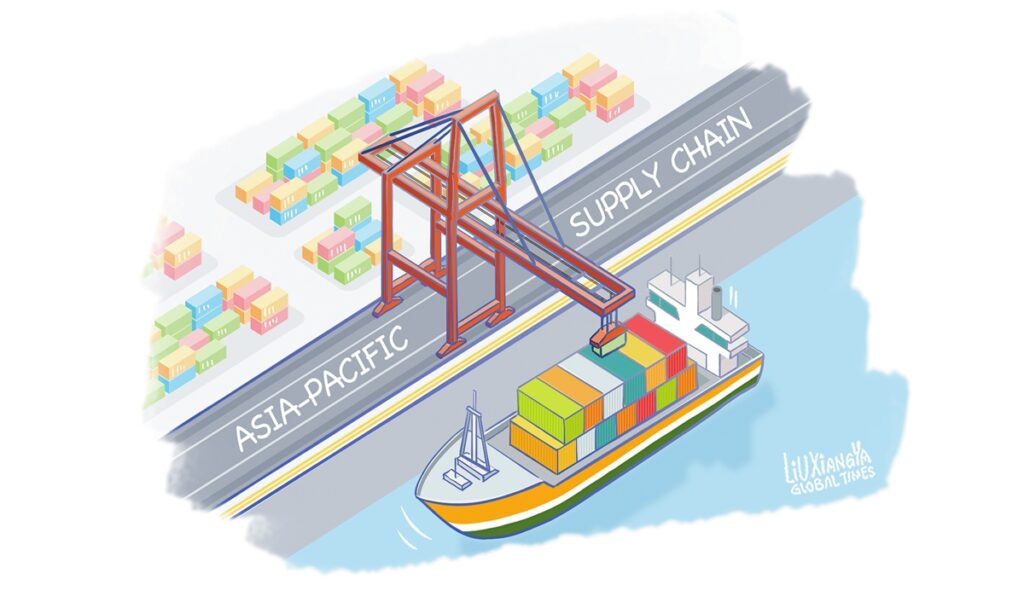The resolution of issues concerning the border area between China and India has sparked discussion in various Indian media outlets regarding the potential for enhanced economic and trade cooperation between these two neighboring countries.
A report in India Today said on Wednesday that the border pact is likely to “pave the way for improved political and trade ties” between China and India, potentially leading to the resumption of direct passenger flights to China and an increase in trade involving telecom hardware and raw materials for pharmaceuticals.
Meanwhile, The Economic Times noted that with tensions easing between India and China, the Indian electronics manufacturing sector anticipates faster technology transfers, investments and capital movement from Chinese companies.
It is no surprise that the new geopolitical development has generated market optimism so quickly. It’s based on the recognition of their complementary strengths and the vast opportunities for collaboration across diverse sectors, including manufacturing, infrastructure and sustainable development.
The reason why people believe that against the backdrop of a de-escalation in border tensions, economic and trade cooperation is likely to see new burgeoning opportunities is largely due to the vast potential for cooperation between the two countries. China possesses a well-established industrial system and robust manufacturing capabilities, particularly in sectors such as electronics, machinery and pharmaceuticals. Meanwhile, India boasts a large market and abundant labor resources, with unique advantages in information technology and the services industry. Cooperation between the two countries can enhance the competitiveness of their respective industries and promote industrial upgrading.
Even before the thaw in China-India relations, the complementarity in their economies already played a role in bilateral trade. For instance, China again emerged as the largest trading partner of India in fiscal year 2023-24, Indian news agency PTI reported in May. Bilateral trade stood at $118.4 billion, with India’s exports to China up by 8.7 percent year-on-year, according to economic think tank Global Trade Research Initiative.
The figures serve as a vivid example that in India’s pursuit of becoming a manufacturing power, its needs for industrial chain support have increased, especially in technology- and capital-intensive products, thus bringing more cooperation opportunities with China.
In the context of the US “decoupling” strategy, the strengthened cooperation between China and India takes on even greater significance. The pressures from the US “decoupling” strategy and technological restrictions have heightened regional tensions and increased geopolitical risks for both nations.
As major powers in the region, China and India share a mutual need for enhanced collaboration to navigate these challenges and gain greater flexibility, thereby amplifying their influence in regional economic and international affairs. This partnership can effectively tackle pressing regional issues while safeguarding their common interests.
Of course, in advancing economic and trade cooperation between China and India, it is essential to address several practical challenges, with India’s concern over the trade deficit being a key issue in their bilateral economic relations. To alleviate this trade imbalance, China could take proactive measures to increase its imports from India.
For example, China could enhance its imports of Indian agricultural products, textiles, minerals and other goods.
Despite the challenges that lie ahead, the positive momentum in economic and trade cooperation between China and India offers a source of optimism, given the encouraging signals from both nations, which reflect a commitment to stabilizing and further developing their bilateral relationship.
The potential for China-India economic cooperation also represents a significant driving force behind the development of the Asian industrial chain, fostering enhanced bilateral trade ties and contributing to overall regional economic growth. Both countries are rapidly growing consumer markets with more than 1 billion people each, and how these two markets interact can be a driving force for the entire region and the world economy.
GT




